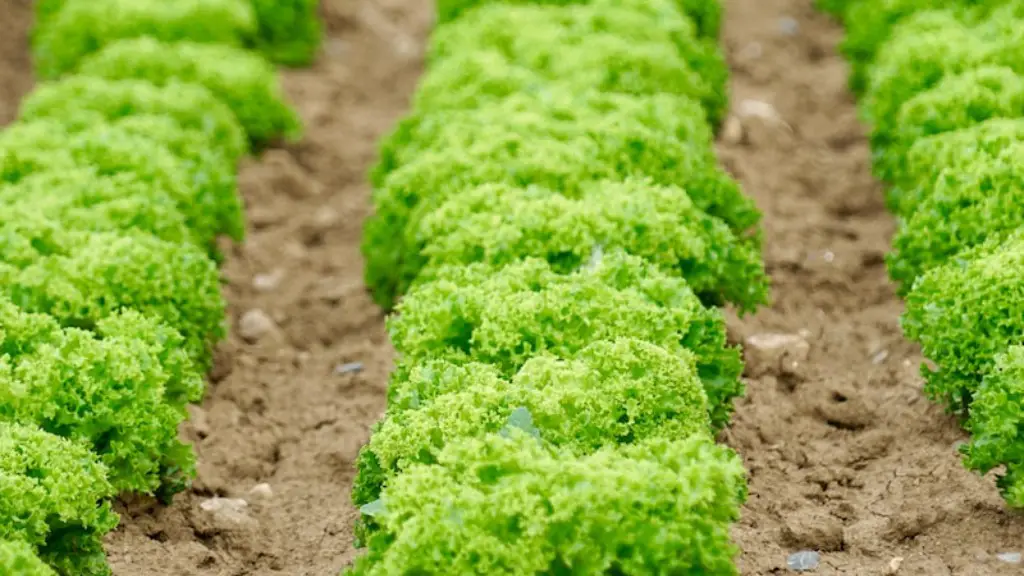Recent evidence suggests that agriculture is responsible for approximately 10% of global greenhouse gas emissions, with methane and nitrous oxide the two most abundant gases produced by this sector. There is no doubt that agriculture has significant environmental implications, and that reducing these emissions is essential for mitigating climate change. However, the question remains: does agriculture produce greenhouse gases, and if so, to what extent?
To answer this question, we must first take a look at the different sources of agricultural emissions. While some emissions, such as methane and nitrous oxide, come from animal husbandry, many emissions stem from the agricultural activity itself. These include the cultivation of crop-based feed, diesel and fertilizer use, drainage of agricultural land for irrigation, and burning of crop residues. Furthermore, tilling and ploughing of soil releases carbon dioxide, further contributing to the overall emission of greenhouse gases.
Furthermore, other practices such as deforestation, draining of wetlands and destruction of grasslands for livestock rearing result in the release of significant amounts of carbon dioxide. This demonstrates that while the agricultural sector contributes to the production of greenhouse gases, these gases are not necessarily caused directly by the agricultural practices alone, but also by the methods used to produce and supply agricultural products.
As agricultural activities expand to meet the rising global demand for food and other products, the emissions associated with them can be expected to increase. To minimize the effects of increased agricultural emissions, it is essential to reduce current emissions and to implement sustainable management practices. In addition to reducing emissions from land use, practices such as crop rotation, no-till farming, composting and precision agriculture can help reduce emissions and improve soil quality.
Finally, it is essential to bear in mind the effects of agriculture-related emissions on climate change. The extent and intensity of these emissions need to be assessed in order to assess the potential of agricultural practices to contribute to the onset of climate change, and the need to take action. By understanding the sources of agricultural emissions, and implementing measures to reduce them, it may be possible to reduce the effects of climate change on our agricultural practices, and ultimately benefit the environment.
Deforestation and Agriculture
Many agricultural activities require land to be cleared, usually through deforestation. More than 10 million hectares of forest are lost each year for agricultural purposes, with the result being a huge loss in carbon storage and a subsequent rise in atmospheric carbon dioxide. Deforestation also results in a decrease in biodiversity and soil loss, further damaging the environment and leading to increased emissions from agricultural activities.
In addition, deforestation releases large amounts of stored carbon into the atmosphere, exacerbating existing climate change-related problems. Finally, developing countries with lower income and higher population growth rates, such as in the tropical areas of Africa and Latin America, are particularly affected by deforestation, as their land is more likely to be converted to agricultural uses.
Consequently, reducing deforestation is vital to mitigating climate change, and preserving biodiversity and soil quality. To this end, governments should look to strengthen existing laws and regulations that protect forests, while providing incentives and support to farmers who adopt sustainable practices, such as agroforestry, that promote both productivity and carbon storage. Together, these measures will reduce the impact of deforestation on climate change, and benefit the environment as a whole.
No-Till Farming for Reducing Emissions
No-till farming is a method of farming that does not require soil to be tilled or ploughed. This helps to preserve the soil’s physical structure and encourages organic matter to remain in the soil, leading to enhanced soil fertility. As a result, organic matter binds to the soil and helps to reduce the amount of carbon dioxide released into the atmosphere.
No-till farming also reduces the amount of fossil fuels and energy expended and promotes the use of crop rotations and cover crops to increase soil fertility. Furthermore, it reduces the amount of water needed for irrigation, along with the run-off of nitrogen and phosphorus-rich fertilizers, which can contribute to eutrophication. This, in turn, reduces the amount of nitrous oxide and other greenhouse gases emitted from agricultural activities.
By reducing tillage and other agricultural activities, farmers can reduce the intensity of their environmental footprint. The benefits of no-till farming are considerable, and include improved soil fertility, lower emissions, and cost savings for farmers. Governments should therefore provide support and incentives to farmers who adopt no-till farming practices.
Organic Farming for Mitigating Climate Change
Organic farming is an alternative approach to conventional farming that relies on natural fertilizers such as manure and compost, rather than synthetic fertilizers and pesticides. The practices used in organic farming reduce the amount of nitrogen, phosphorous, and other pollutants that can be released into the environment, thus contributing to climate change mitigation.
Organic farming also helps to improve soil organic matter and water retention. This benefits the environment through increased biodiversity, pollinator abundance, and resilient ecosystems. As a result, organic farming can help to reduce the amount of greenhouse gases released from agricultural activities and offset climate change-related problems.
Apart from providing environmental benefits, organic farming can also lead to cost savings for farmers and help build resilience against climate change. Farmers are encouraged to adopt and use organic farming practices and to replace synthetic fertilizers with natural inputs. Governments should provide support and incentives to those who use organic farming methods to reduce emissions, while ensuring that they can still generate a healthy income.
Managing Agricultural Waste and Runoff
The management of agricultural waste and runoff is essential to preventing environmental pollution and reducing greenhouse gas emissions. Agricultural waste and runoff, such as manure, missing pesticides, and fertilizer, can be managed through containment, treatment, and storage measures. Manure should be stored in sealed tanks and treated to reduce the risk of methane emissions, while excess nitrates and phosphorus should be removed through filtration or adsorption systems.
In addition, terracing and other agricultural techniques can be used to reduce the risks of nitrogen leaching and runoff. These techniques help to reduce nutrient transport and soil erosion, as well as enhance water infiltration. Irrigation techniques such as drip irrigation reduce excess water use, allowing farmers to optimize their water management practices.
By managing agricultural runoff, farmers can reduce their impact on the environment and promote sustainable practices. Governments should mandate the use of best practices and provide incentives for those who adopt them. Furthermore, governments should also support farmers in the installation of waste treatment systems and the adoption of newer, sustainable practices.




